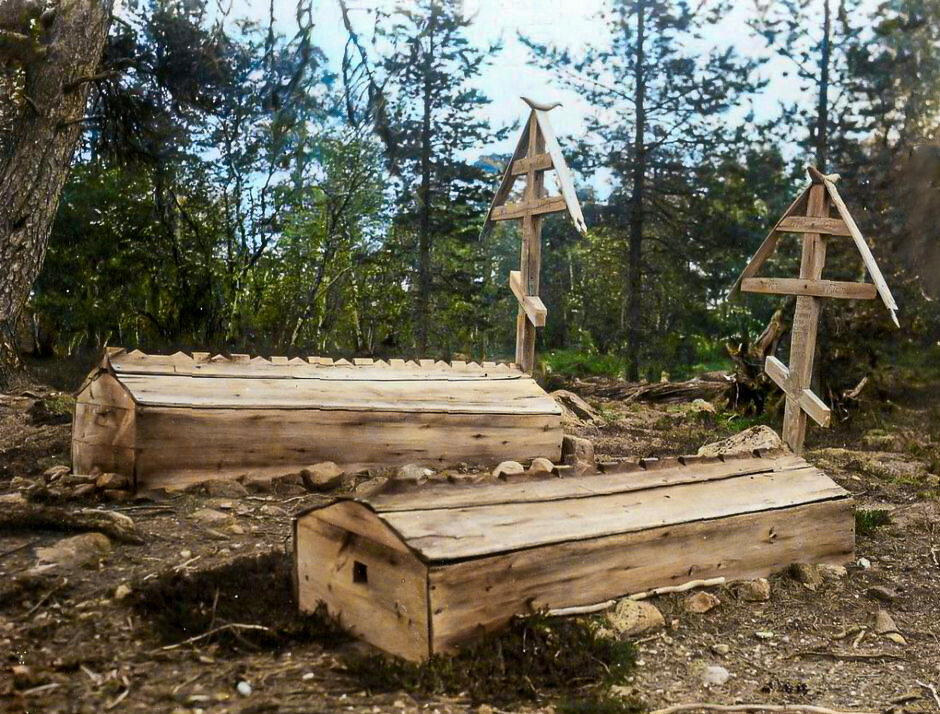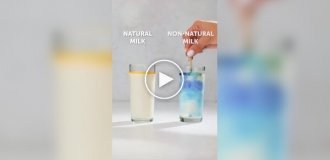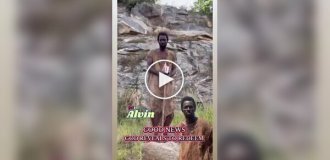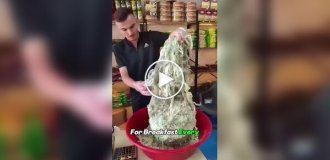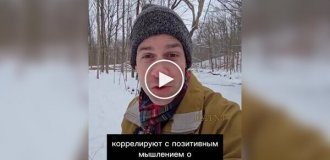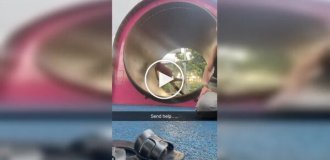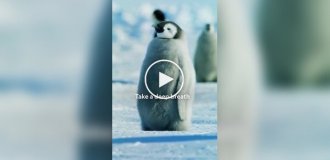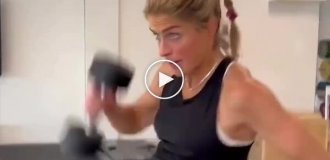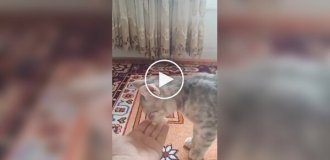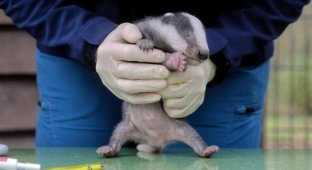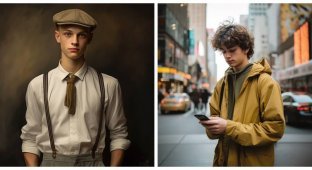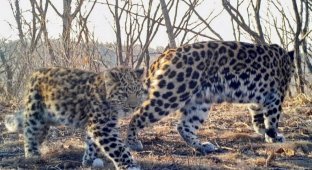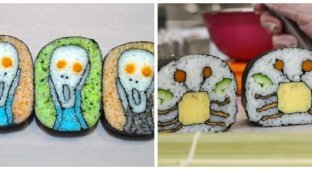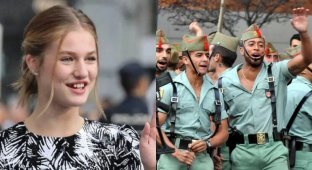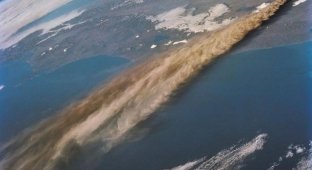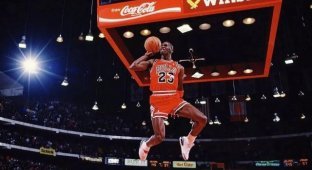Rare archival photographs of one of the smallest peoples in Europe (20 photos)
The Sami, known in ancient times as Lapps and Laplanders, are an indigenous people of Northern Europe who have preserved their unique traditions to this day. A century ago, the Sami lived almost the same as in the late Middle Ages. Unique photographs taken in the 1930-1940s. 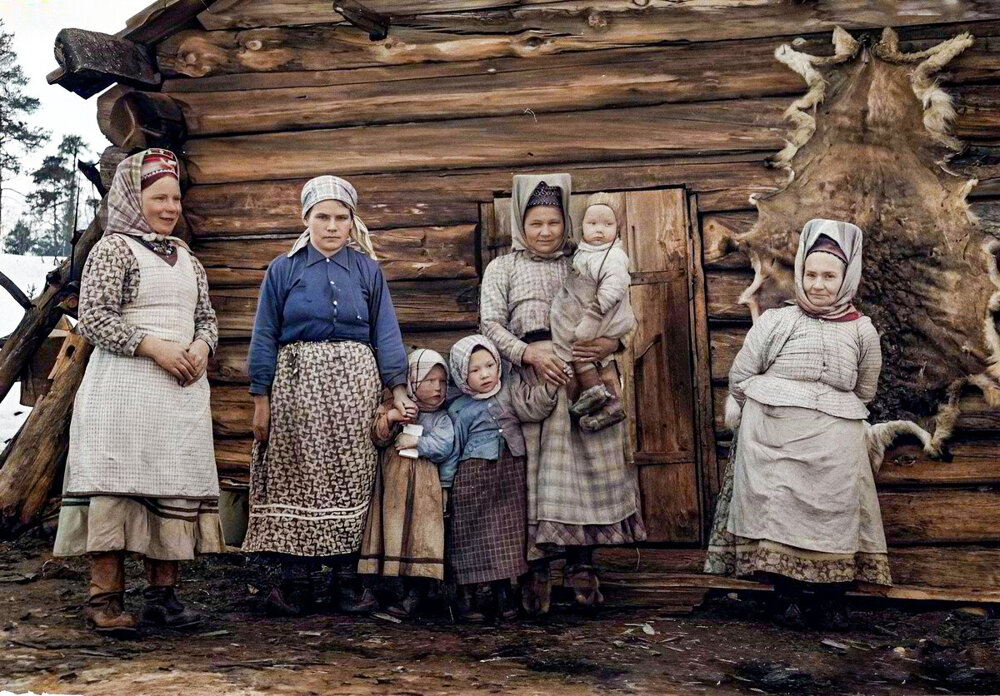
Sami women with their children in Suonikylä in 1942.
The photographs went through colorization and restoration, enjoy viewing!
Lapland, the homeland of the Sami, never had its own statehood. This land is divided between Norway, Finland, Sweden and Russia.
Sami barn 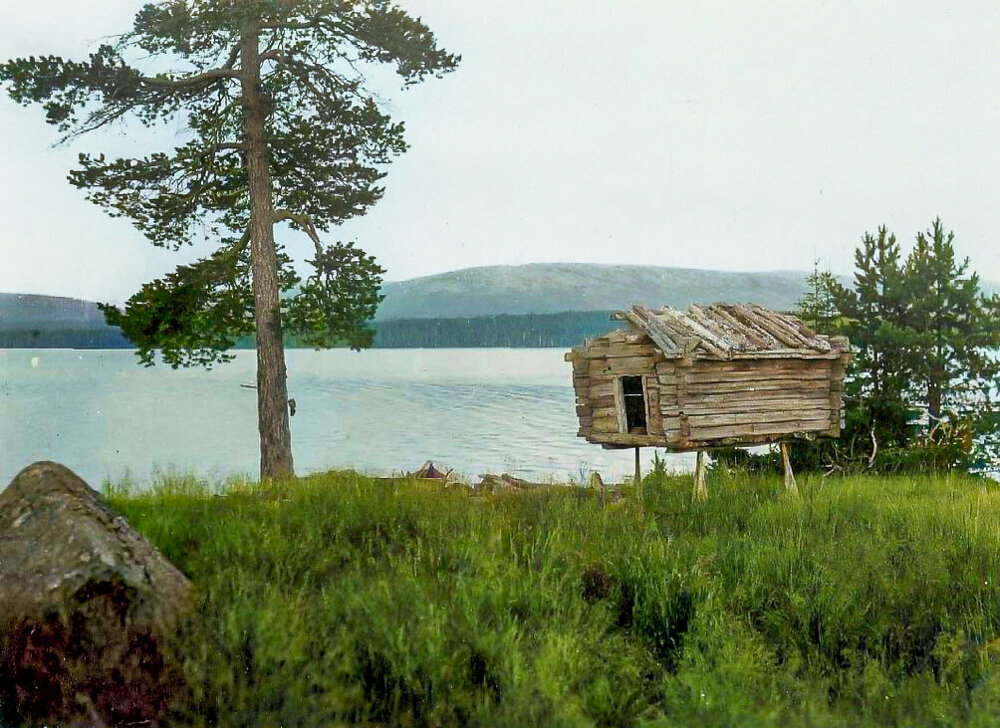
The traditional Sami barn on stilts resembles a fairy-tale hut on chicken legs. The barn was installed above the ground to protect food from predators
Sami on the river
Fishing has been a traditional Sami occupation since time immemorial. 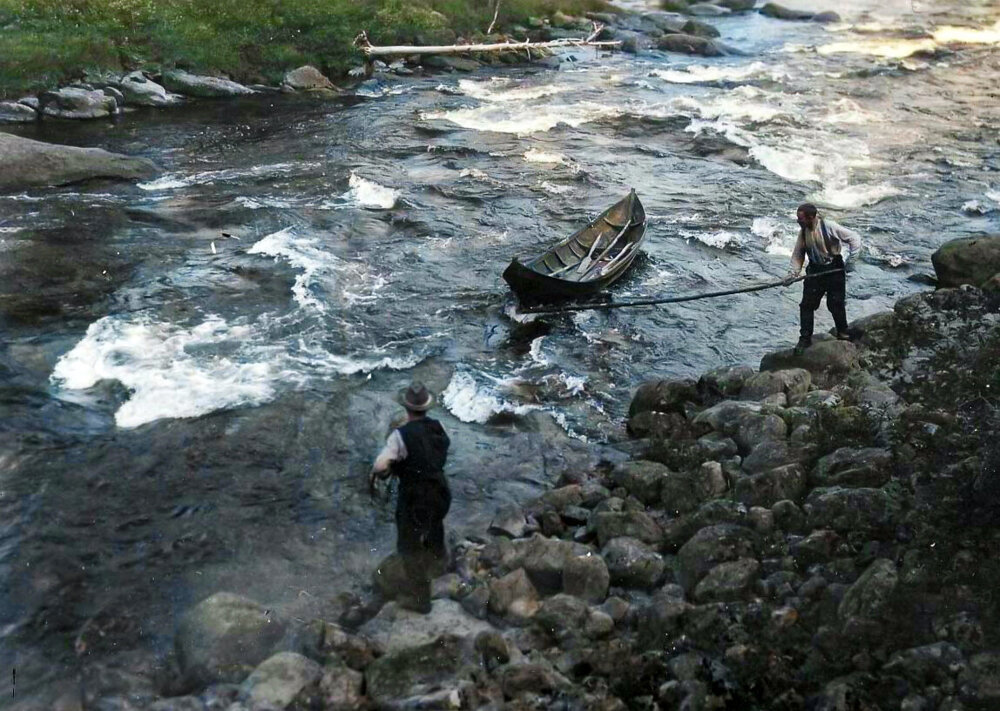
In Russia (until 1991 in the USSR), the Sami live on the Kola Peninsula.
A Sami woman splits pine roots, 1933 
The Sami love music, but choral singing is unknown to their culture - only solo. Their folklore is characterized by the replacement of chest singing with throat singing.
Sami woman knitting 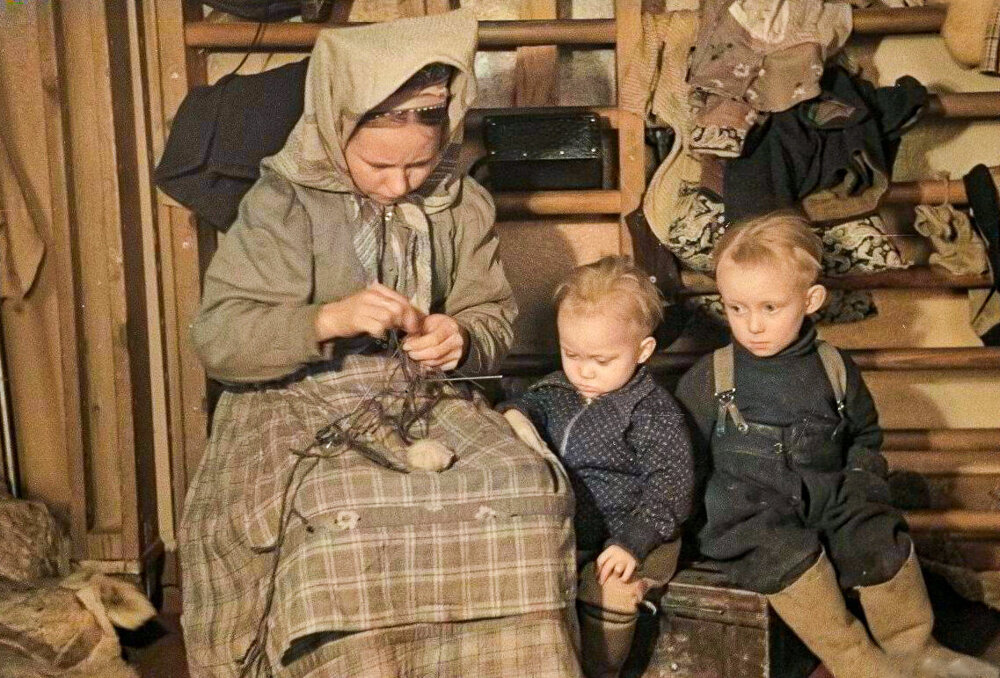
The Sami language has 10 different dialects, some of them so different that Finnish linguists consider them to be separate languages.
Older generation 
Today, most Sami profess Christianity, but a hundred years ago they were characterized by the cult of ancestors.
Carcass cutting 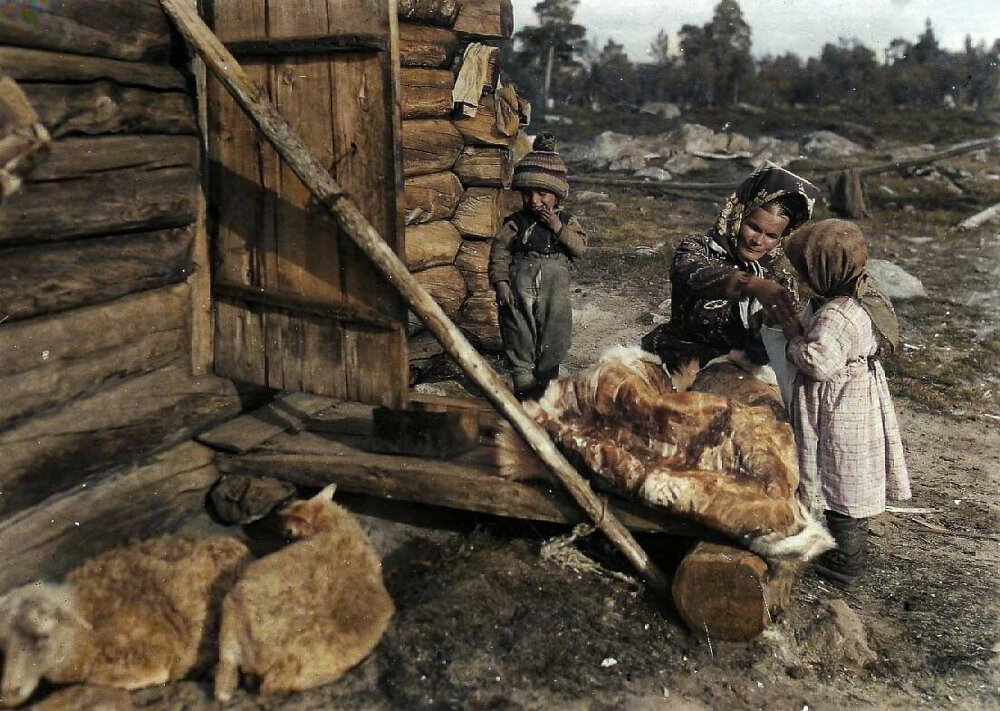
There are about 70 thousand Sami people in the world. More than half live in Norway.
Sami woman and summer housing
It is called vezha (kuet) - the most common Sami dwelling and the most famous. This is a cone-shaped structure made of poles, which was covered on top with reindeer skins, turf and tree bark. The entrance to the vezha was located on the side; the small door was hung at an angle so that it could close quickly and tightly. 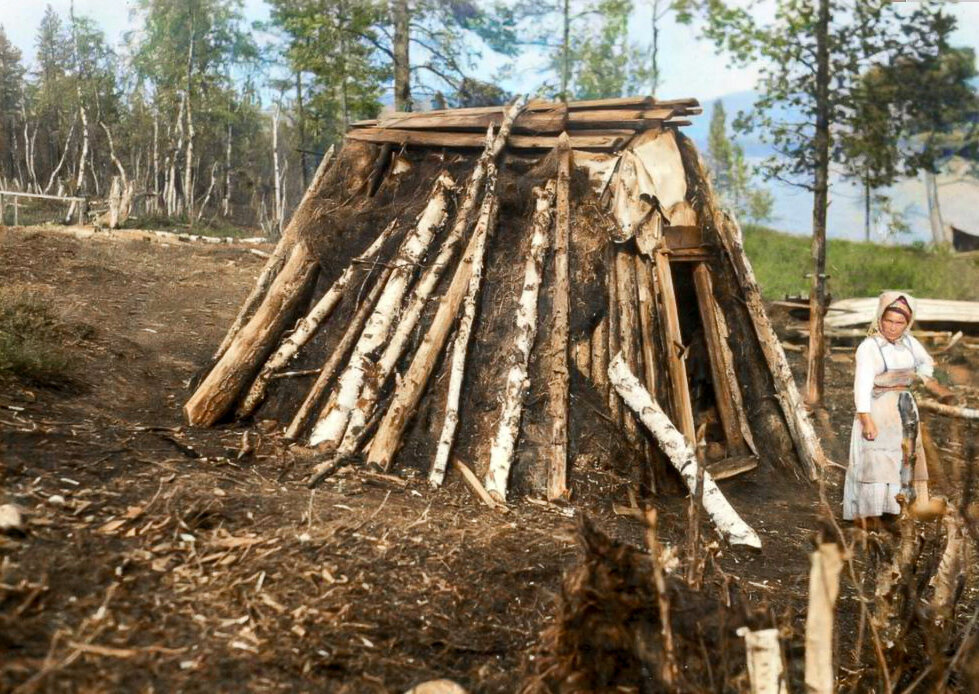
Livestock
Cattle in the north, where there is almost no hay available, were fed algae.
“In some places, algae that cover in a thick layer, up to the tide lines, all stones and rocks near the seashore and its bays, as well as white moss (Sphagnum) are used as feed for livestock.” - G.F. Gebel. Our Lapland. 1909
For centuries, the basis of the Sami diet was fish and venison, but at the beginning of the 20th century, goats and sheep began to appear on their farm. 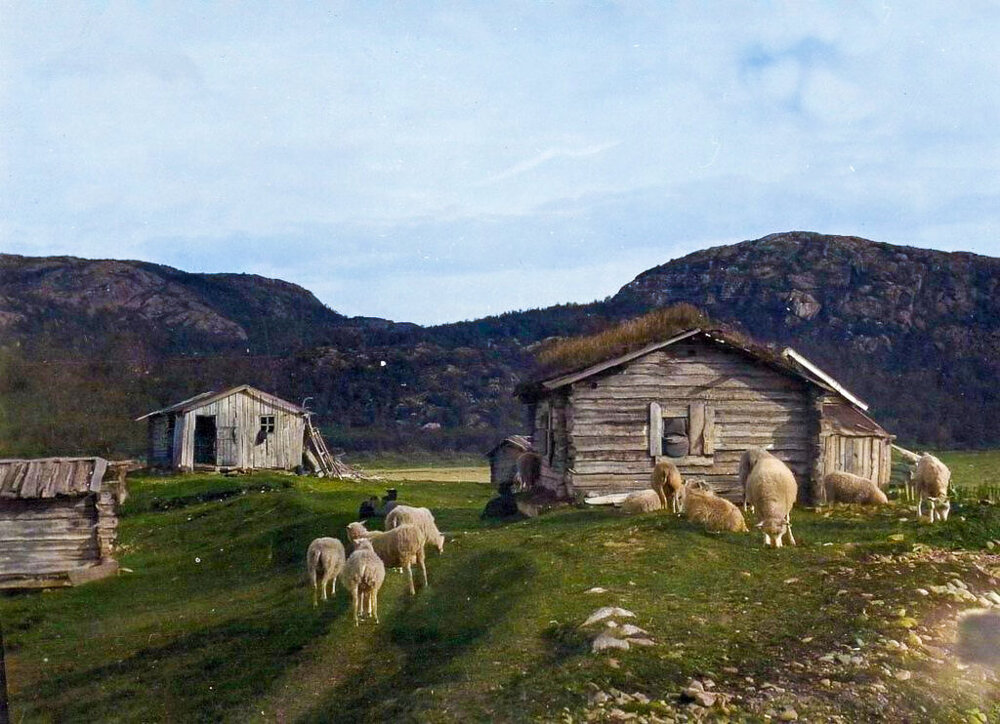
Winter house
Tupa (pert) is a Sami dwelling, built of thick boards or small logs, a quadrangular structure with a flat roof. Tupas appeared later than vezh, around the 17th century. It is even possible that the Sami “spied” them on industrialists on the Murmansk coast.
Compared to the vezha, the tupa is very well-maintained. There is a floor, a bench and a table, and the hearth resembles a fireplace, the chimney of which goes out to the roof. 
Sami weave in the door corner of the hut 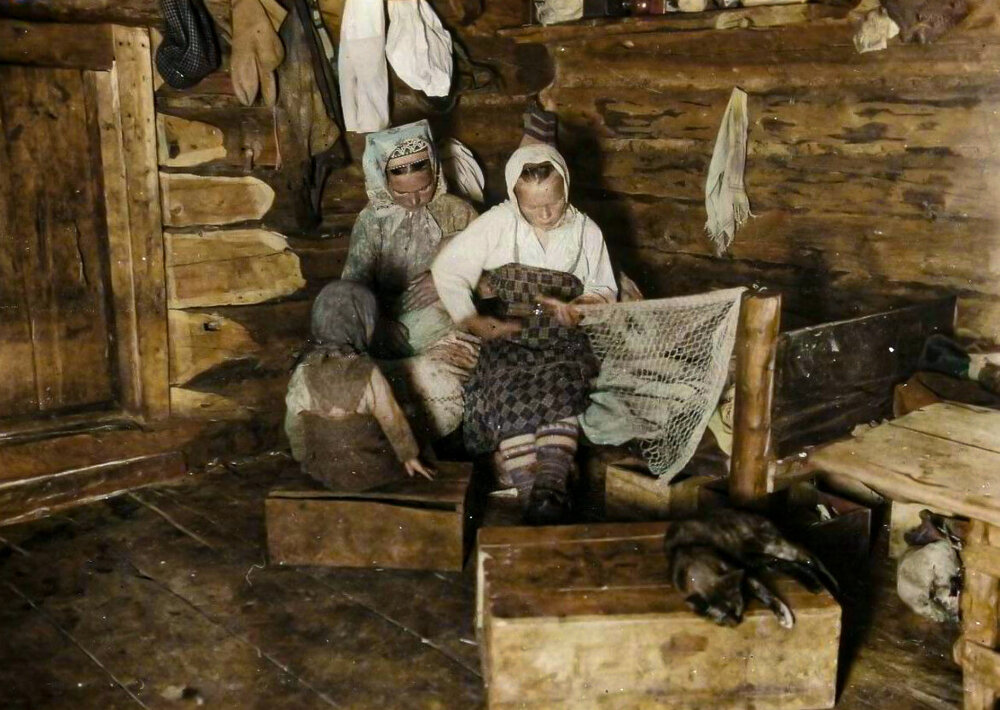
Inside the home
The primitive hearth was located in the pyrt (Sami dwelling) next to the front door. 
Sami woman with a puppy 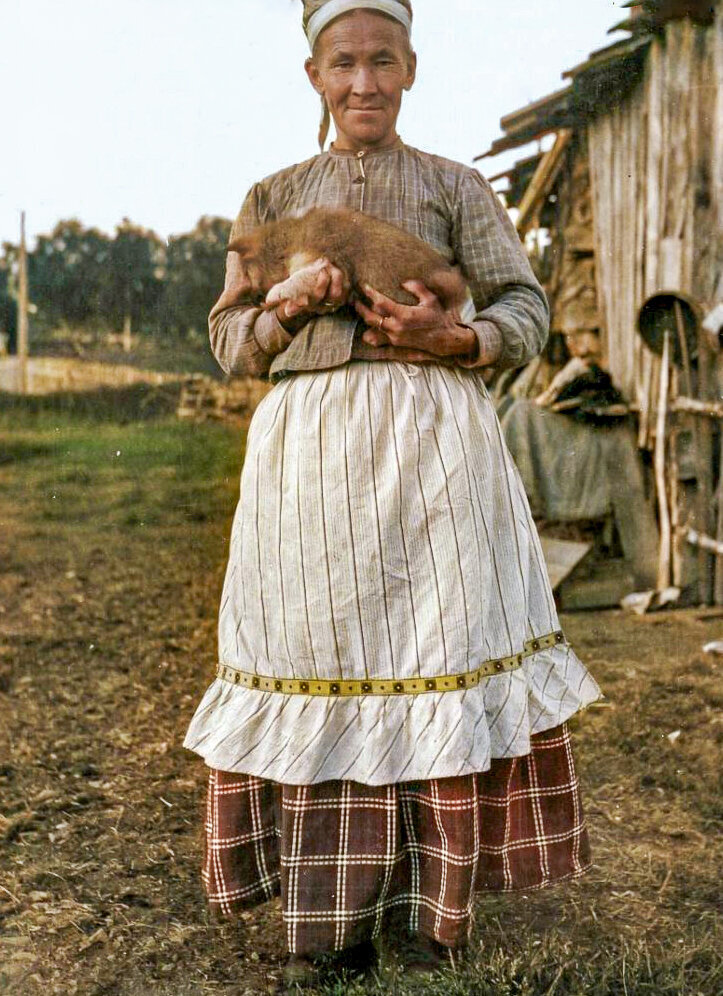
Three generations of Sami near the house 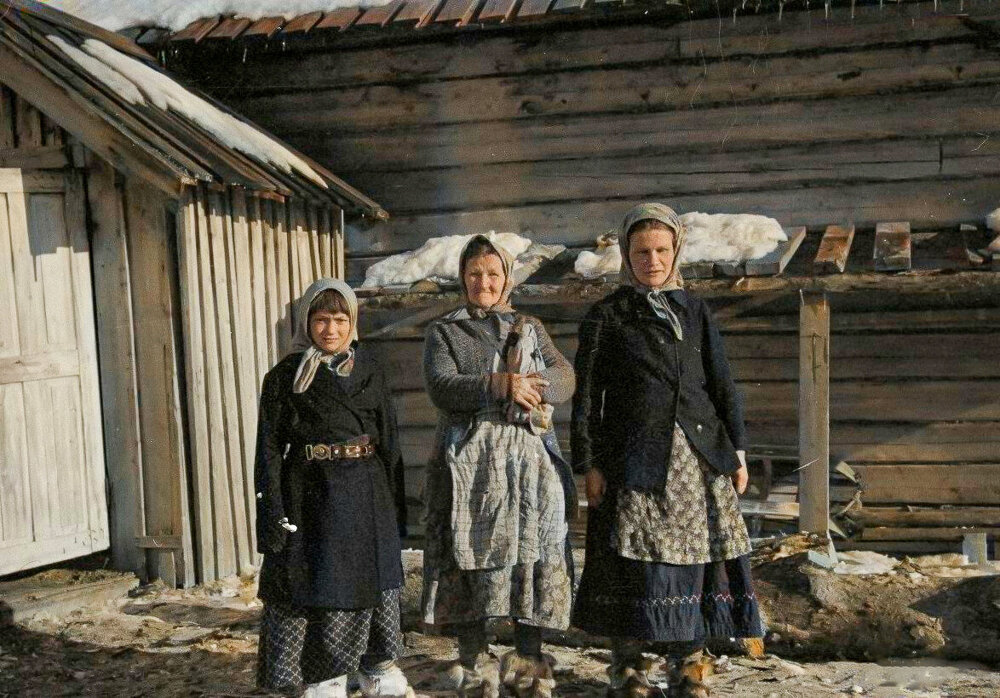
Sami woman at work
Cutting deer skin. 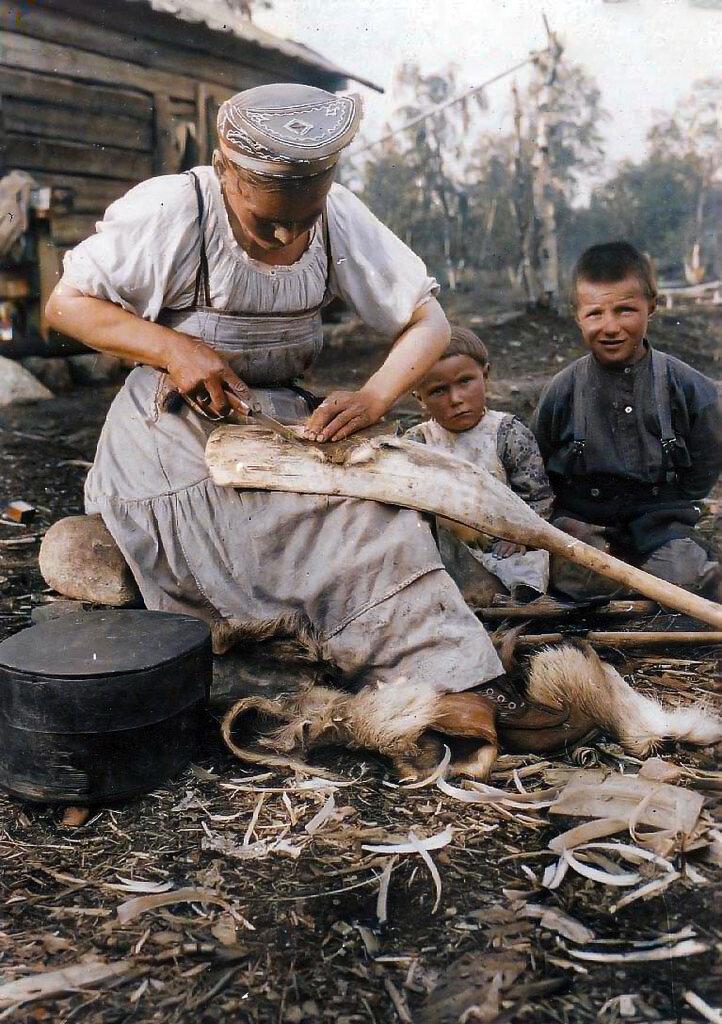
Winter house 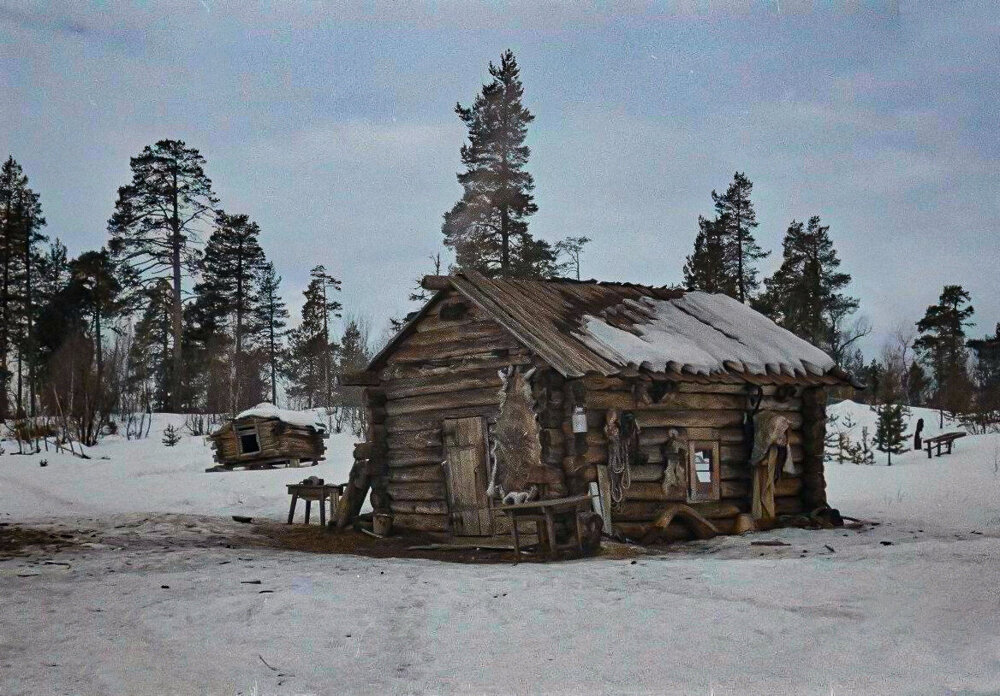
Sami family, 1942
The name of the village Songelsk is a Lapp churchyard, one of the largest in the Kola North. 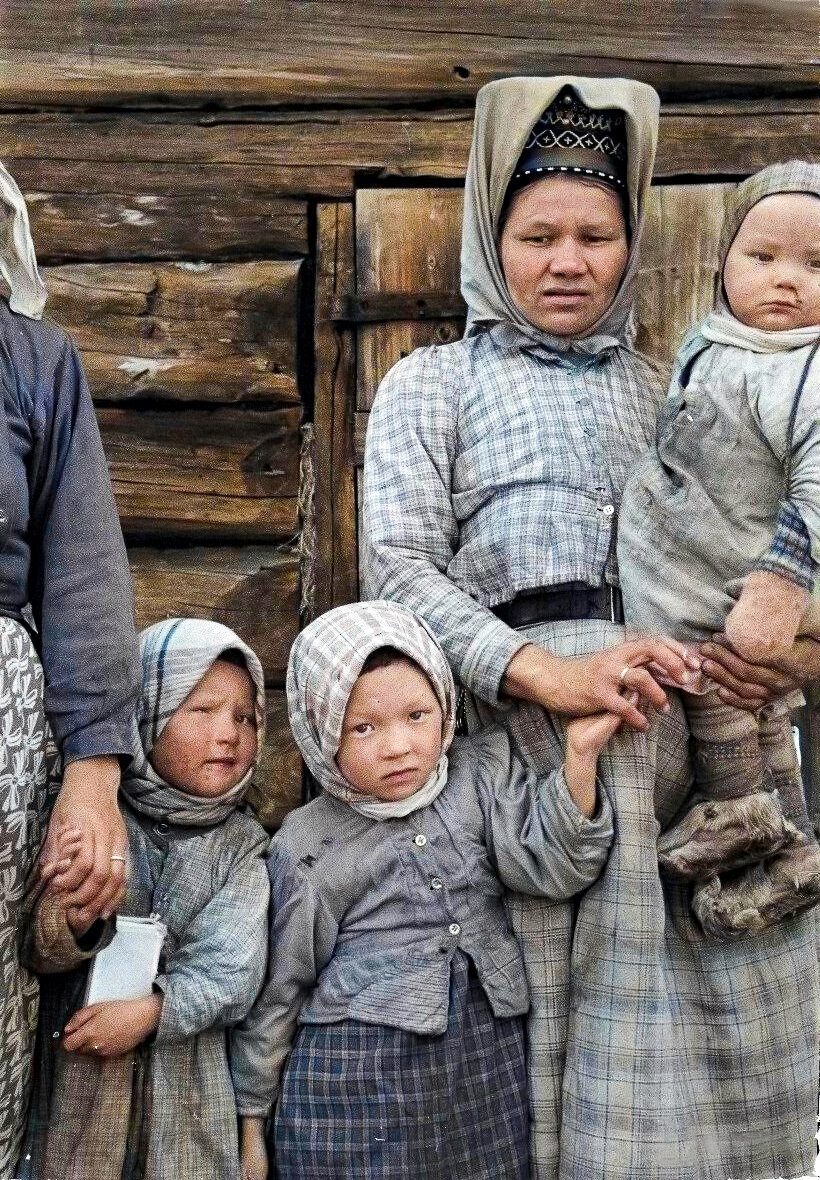
In Hans Christian Andersen's fairy tale “The Snow Queen,” Gerda stays in Lapland with a kind Sami woman.
Sami woman rowing in a boat, 1933
Shoes are affected. Leather boots were rare and expensive. And these ones also look modern, like natural “boot boots”. 
Sami mother and children in the winter village of Suonikylä, 1932
The cradles are similar to the traditional cradle bags of the North American Indians. 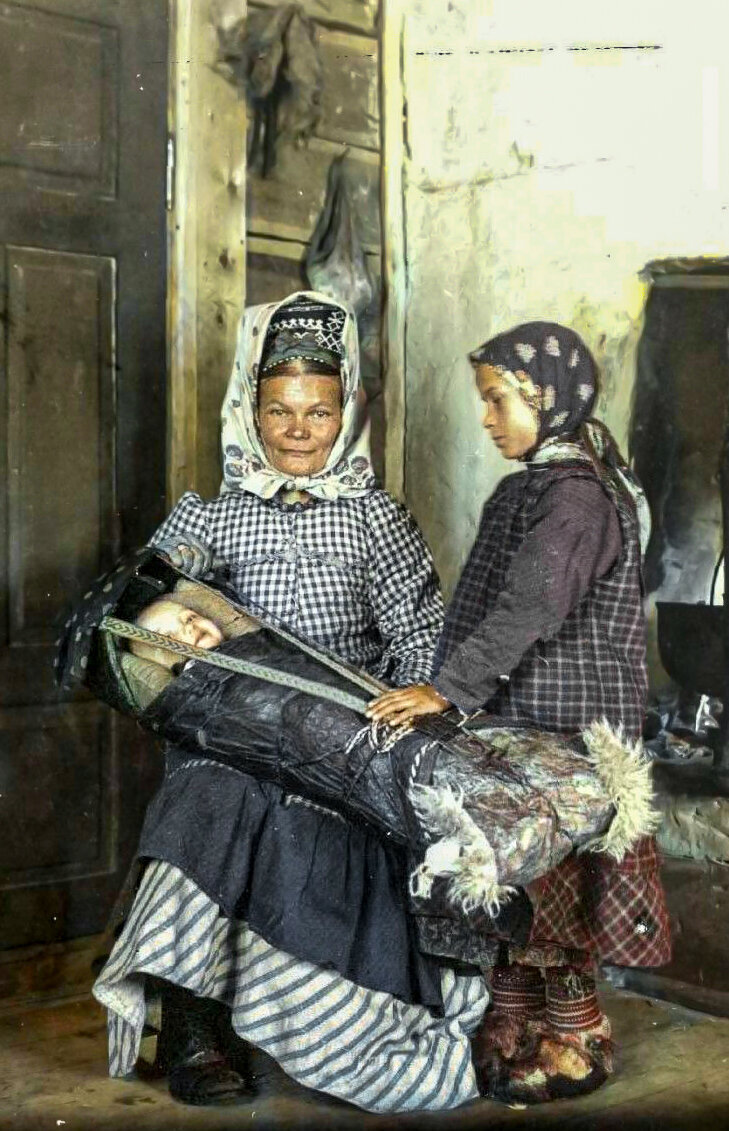
Domovina. Sami burial
Due to the nature of the soil in the north (moss and rocks), coffins were not buried. 